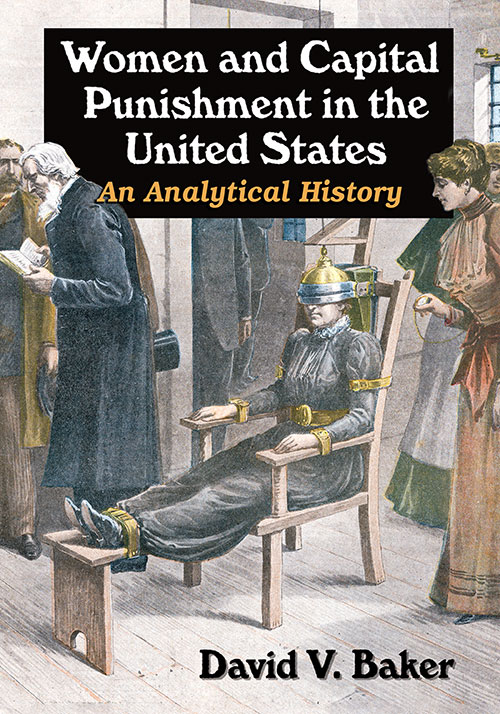Women and Capital Punishment in the United States
An Analytical History$49.95
4 in stock (can be backordered)
About the Book
The history of the execution of women in the United States has largely been ignored and scholars have given scant attention to gender issues in capital punishment. This historical analysis examines the social, political and economic contexts in which the justice system has put women to death, revealing a pattern of patriarchal domination and female subordination.
The book includes a discussion of condemned women granted executive clemency and judicial commutations, an inquiry into women falsely convicted in potentially capital cases and a profile of the current female death row population.
About the Author(s)
Praise for the Book
“This comprehensive and compelling text covers all aspects of women and capital punishment…a well-written and fascinating book. What is remarkable is the amount of research and time that went into collecting the enormous amount of information…essential”—Choice
Bibliographic Details
David V. Baker
Format: softcover (7 x 10)
Pages: 440
Bibliographic Info: notes, bibliography, index
Copyright Date: 2016
pISBN: 978-0-7864-9950-2
eISBN: 978-1-4766-2288-0
Imprint: McFarland
Table of Contents
Introduction 1
Organization 2
Part I. Theoretical and Empirical Frameworks
1. Theoretical Frameworks 6
Chivalry Theory 6
Evil Woman Theory 7
Equality Theory 9
A Critical Perspective 1
Capital Justice and the U.S. Supreme Court 12
Capital Justice and Women in the Modern Era 18
Concluding Remarks 30
2. Empirical Frameworks 31
Data 31
Characteristics 33
Historical Contours 40
Concluding Remarks 42
Part II. Historical Context
3. The First Historical Trend, 1630s–1750s 64
Executions of White Women 65
Executions of Black Women 83
Executions of American Indian Women 90
Concluding Remarks 91
4. The Second Historical Trend, 1760s–1890s 92
Executions of White Women 92
Executions of Black Women 107
Executions of Mexican Women 128
Executions of American Indian Women 130
Execution of a Native Hawaiian Female 132
Correcting the Historical Record 132
Concluding Remarks 132
5. The Third Historical Trend, 1900s–2010s 134
Executions of White Women 136
Executions of Black Women 160
Execution of an American Indian Woman 169
Correcting the Historical Record 170
Contrasting Lynchings and Executions 170
Concluding Remarks 171
Part III. Wrongful Convictions, Judicial Commutations, Executive Clemency and Women on Death Row Today
6. Wrongful Convictions in Potentially Capital Cases 174
Data 175
Factors Contributing to False Convictions 180
Predatory Murder 184
Spousal Murder 201
Child Murder 206
Shaken Baby Syndrome 220
Medical Neglect Cases Motivated by Religion 222
Manslaughter 223
Concluding Remarks 227
7. Judicial Reversals of Capital Convictions 229
Early Cases of Judicial Reversals 233
Judicial Reversals Post-Furman 239
Concluding Remarks 288
8. Executive Clemency of Condemned Women 290
Clemency and Gender 292
Women on Death Row Granted Clemency 292
Clemency in the 18th Century 298
Clemency in the 19th Century 302
Clemency in the 20th Century 314
Concluding Remarks 333
9. The Female Death Row Population 335
Institutional Indifference 337
Women Foreign Nationals 338
Deaths of Condemned Women by Natural Causes 339
Characteristics of the Female Death Row Population 340
Predatory Murderers 341
Child Murderers 356
Spousal Murderers 364
Life Without Parole 370
Concluding Remarks 372
Conclusion 373
The First Historical Trend 373
The Second Historical Trend 375
The Third Historical Trend 376
Chapter Notes 381
Bibliography 394
Index 425









